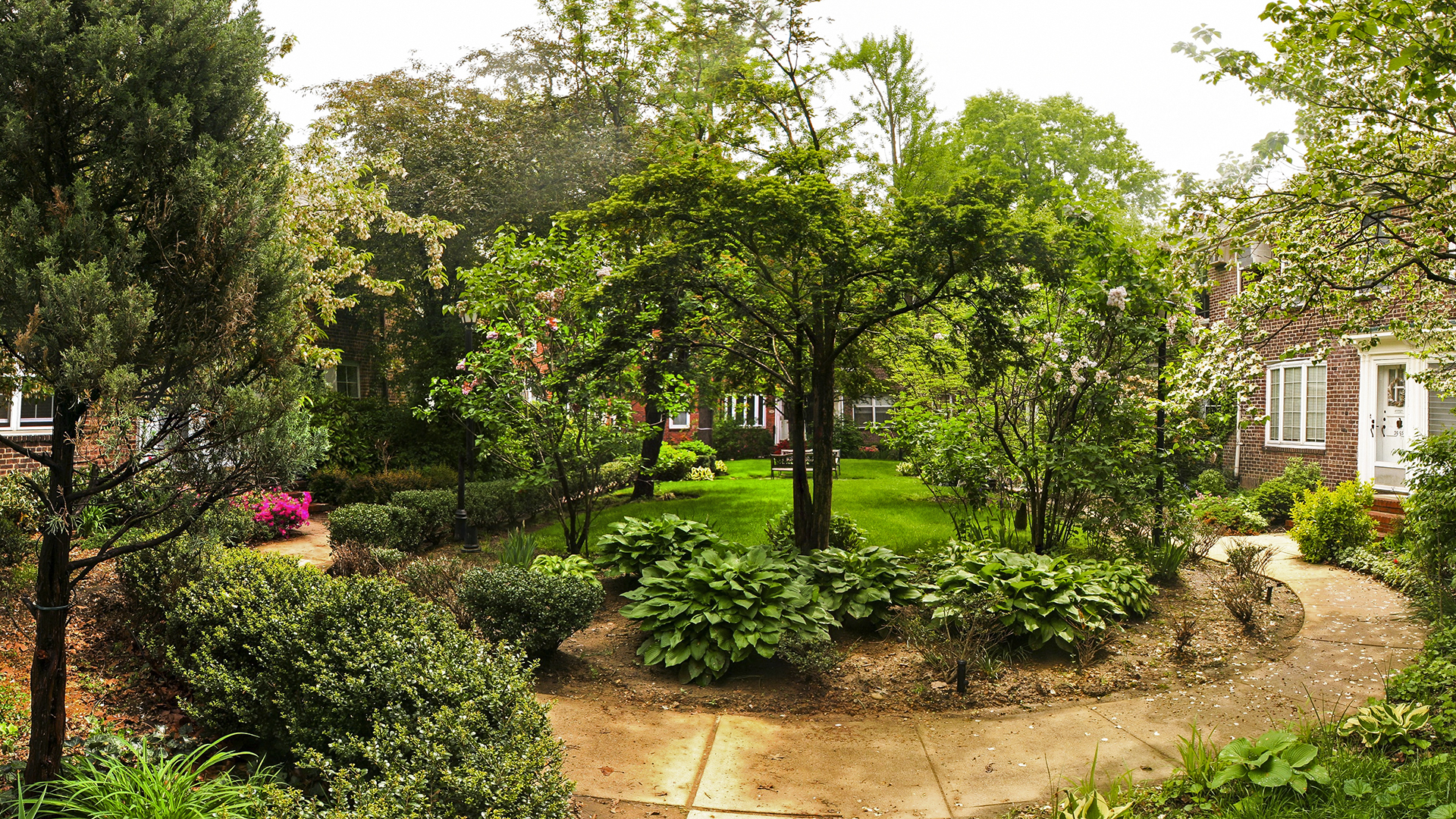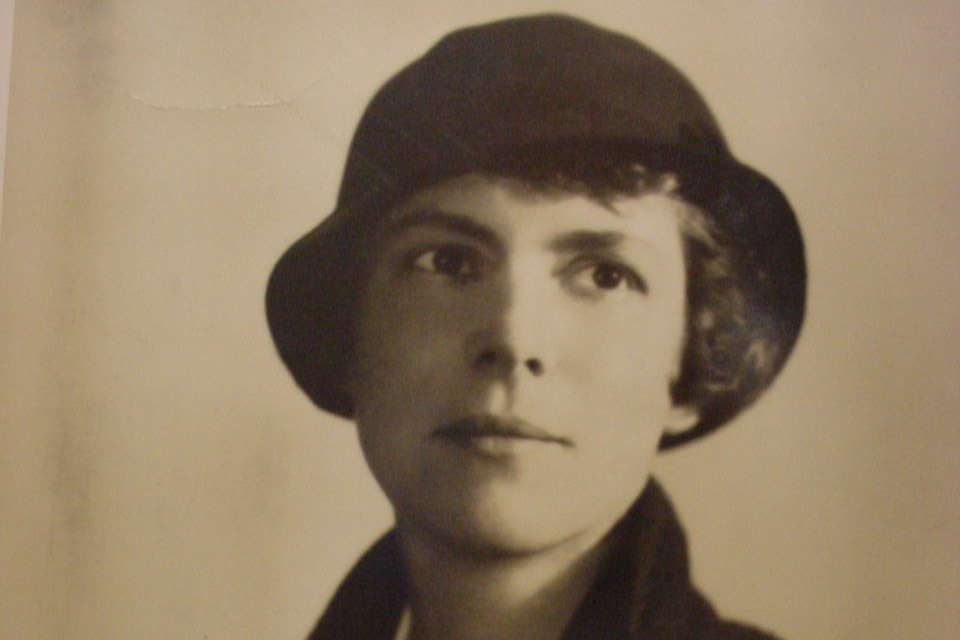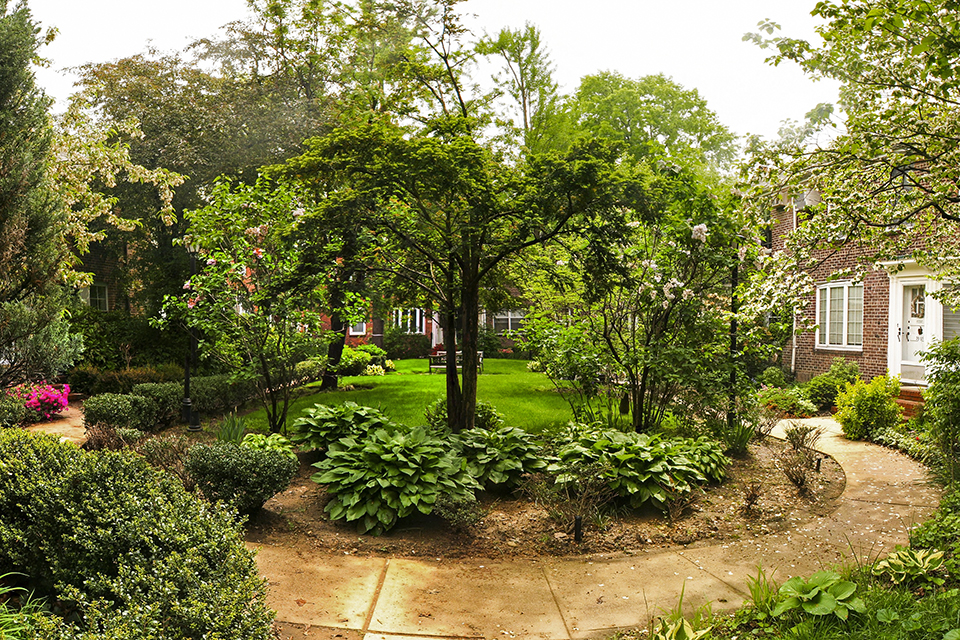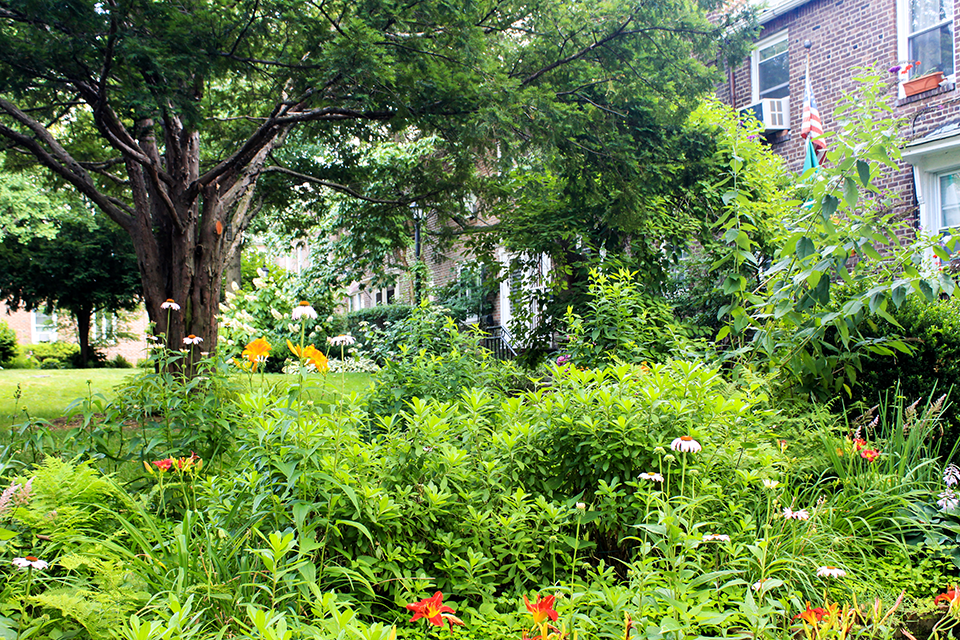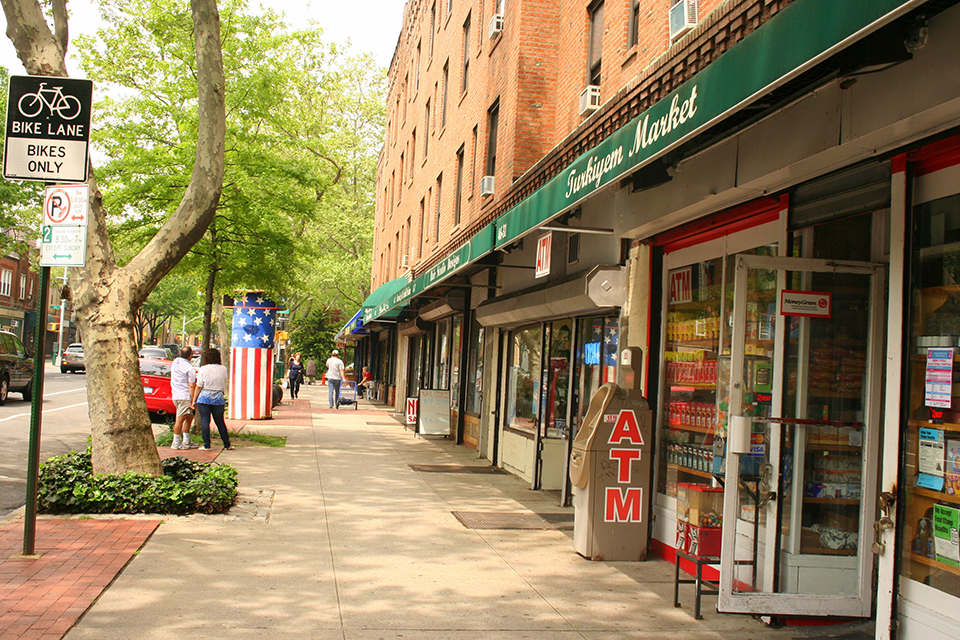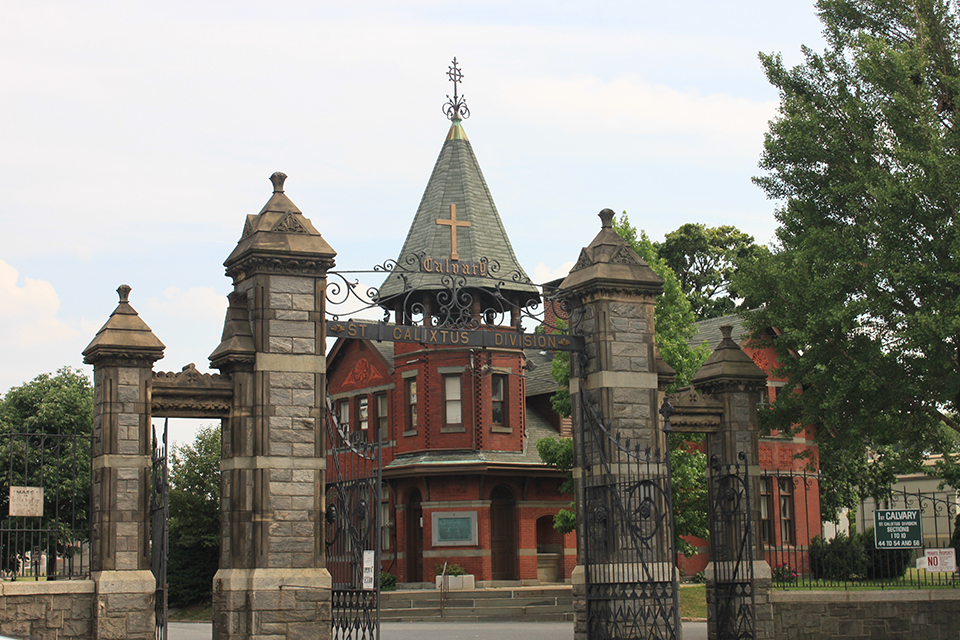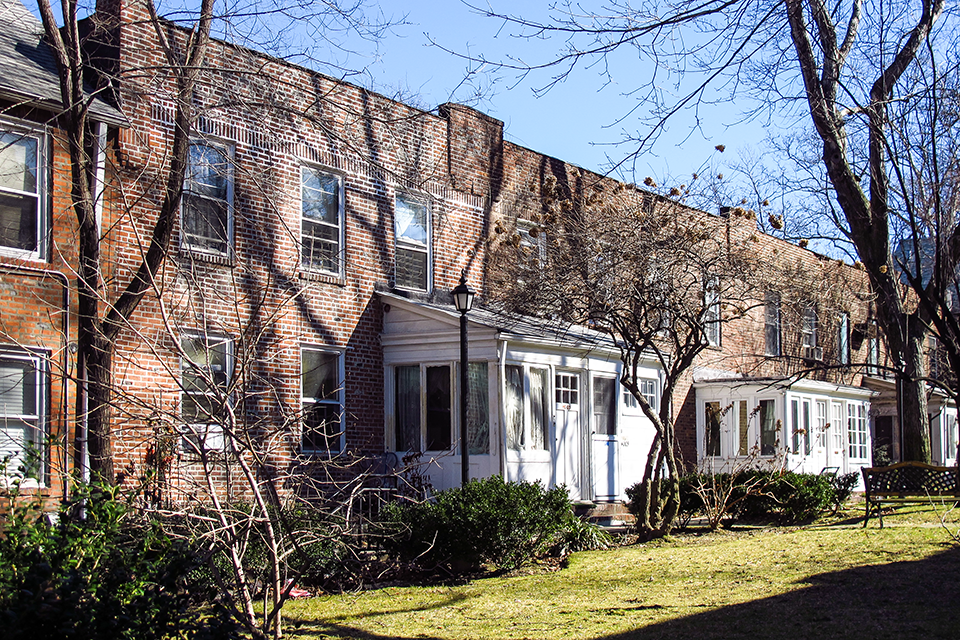Sunnyside Gardens' deeply urban attempt at a garden suburb was instigated in 1924 by the City Housing Corporation (CHC), a real estate development partnership steered by Alexander Bing. Bing commissioned fellow Regional Planning Association of America members Clarence Stein and Henry Wright to design high quality, affordable homes on an 80-acre site in Queens, New York. The RPAA believed that the primary obstacles to home ownership were the high cost of land and building materials. Targeting the working class and using the superblock – a very large commercial or residential block barred to through traffic and crossed by pedestrian walks – as the basic unit of development, the designers incorporated a well-articulated pattern of circulation systems to reduce the massive scale of the project. Wright and Stein were determined to adapt Ebenezer Howard’s model of the English Garden City to the American urban environment; Sunnyside Gardens thus served as a ‘test case’ for the larger garden suburbs that would follow, including Radburn, NJ; Greenbelt, MD; and Baldwin Hills (now Village Green), Los Angeles, CA. One of its first residents was urban critic Lewis Mumford.
Background
Built between 1926 and 1928, the single-, two-, and three-story homes were plain, brick boxes with sizeable rooms and many windows. Designed by Frederick Lee Ackerman, the “group housing” shared inner courtyards laid out by landscape architect Marjorie Sewell Cautley. The neighborhood was listed in the National Register of Historic Places in 1984; in 1991 it was named a National Planning Landmark and designated a New York City Historic District in 2007.
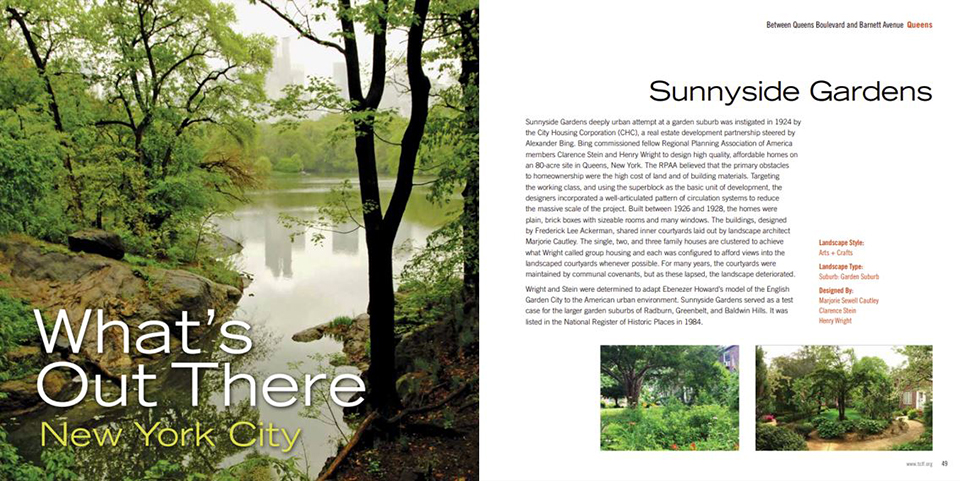
What’s Out There New York City guidebook, 2012. Image courtesy The Cultural Landscape Foundation.
Advocacy and Engagement
TCLF enrolled Sunnyside Gardens in its Landslide program of at-risk landscapes on October 11, 2013, when development threatened the area known as the Phipps Outdoor Nursey and playground, located within the historic district. The proposal also called for the reconstruction of the Aluminaire House – the first prefabricated metal house designed and built in the United States – on the site. The quarter-acre playground area was specifically dedicated open space designed to accommodate small children, with visual access for neighboring parents. Critical to the original design intent of the project team, and reinforced by Cautley’s philosophical approach to the community’s design as reinforced by her plant material selections, were the purposeful visual and spatial relationships.
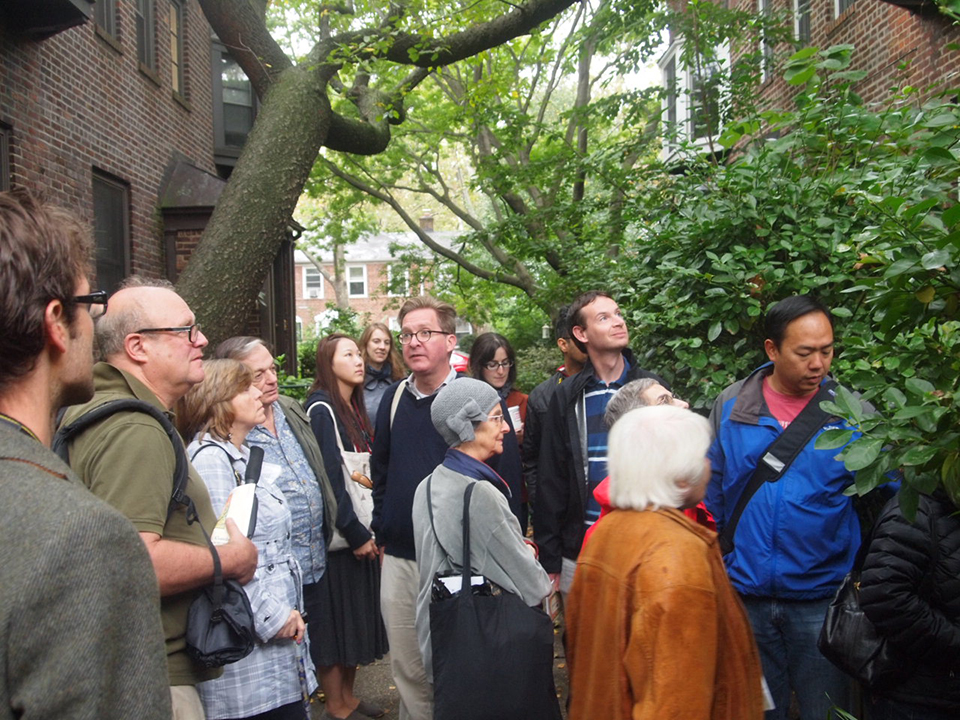 What’s Out There Weekend New York City, New York, NY, Photo by Eli Sands, courtesy The Cultural Landscape Foundation.
What’s Out There Weekend New York City, New York, NY, Photo by Eli Sands, courtesy The Cultural Landscape Foundation.
As landscape historian Thaisa Way has noted, Cautley's design approach aimed “to integrate natural landscapes into the lives of the lower and middle classes; to design landscapes that would best serve the needs of women and children; and to involve the community in the design process.”
Recognizing that many of the community’s historic landscape features and continuity of use were intact, including a large wooden shade structure, a child-scaled wood frame playhouse, original steel play equipment, and mature specimen canopy trees, the proposed new construction would have eliminated the essential character-defining open space, replacing it with a market-rate apartment complex entirely inappropriate to the planning, design, materials, massing, and sense of community, that were foundational to the very idea of Sunnyside.
In early 2014 the New York Landmarks Preservation Commission ruled against an application to relocate the Aluminaire House onto the site and to construct eight additional apartment units (the Aluminaire House will instead be reconstructed on the grounds of Palm Springs Art Museum in California).
The development and relocation proposal brought attention to the Phipps Outdoor Nursery playground, proving fortunate for the continuity of the dedicated open space for children and its original design intent. The public discourse helped highlight the need to preserve and protect this open space in the face of future development proposals; it also brought greater attention to Cautley’s design philosophy and legacy, leading to a burgeoning interest in her work. Debate over the relocation of the Aluminaire House also helped generate an ongoing recognition that open spaces can be an integral part of the original design intent and are not just tabula rasa spaces to be filled in with structures.
To ensure the continuity of the historic use while also serving present-day residents, in 2018 the Phipps Outdoor Nursery playground was purchased with funds secured by Councilman Jimmy Van Bramer as part of the city’s budget agreement, with plans to rehabilitate the playground as a public park. Soon after the purchase, a fire broke out in a Harlem building, killing FDNY Lieutenant Michael R. Davidson, who had been born and raised in Sunnyside, across the street from the former Phipps Playground. A movement grew to name the newly acquired park after Davidson, and in 2021 design plans were submitted for the Lt. Michael R. Davidson Playground, which included play equipment and a water play area for children, an element to honor Davidson, seating for adults, the restoration and integration of extant historic structures, and a revitalization ethic that is sympathetic to the site’s National Register designation and continuity of uses as Sunnyside approaches its centennial.
Selected Resources
Landslide 2020: Women Take the Lead – Introduction
“NYC Landmarks Commission Votes No on Siting Aluminaire House in Phipps Nursery,” May 6, 2014
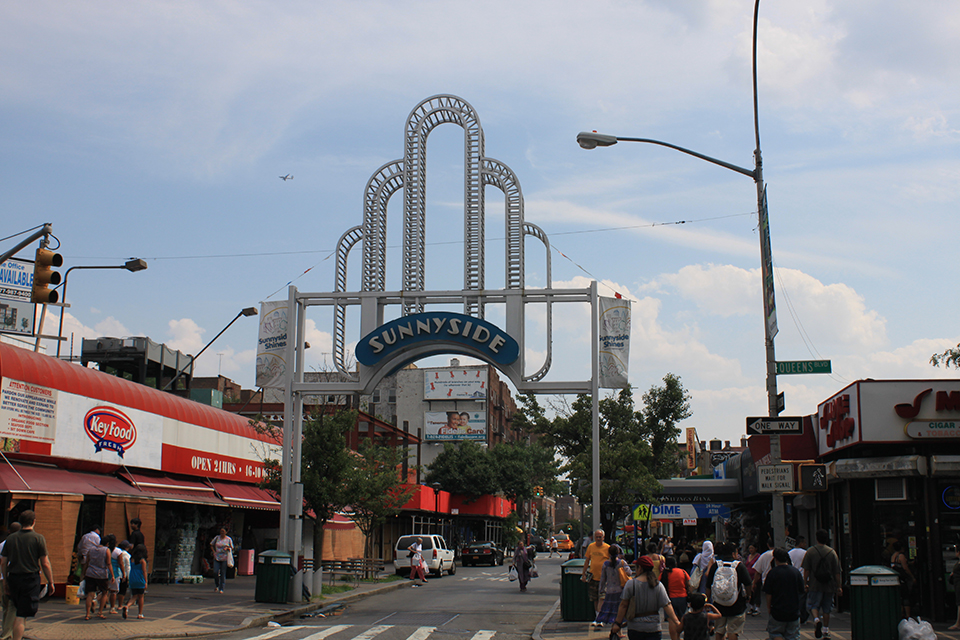
-
Sunnyside Gardens, Queens, NY, 2012. Photo by Emilio Guerra.
